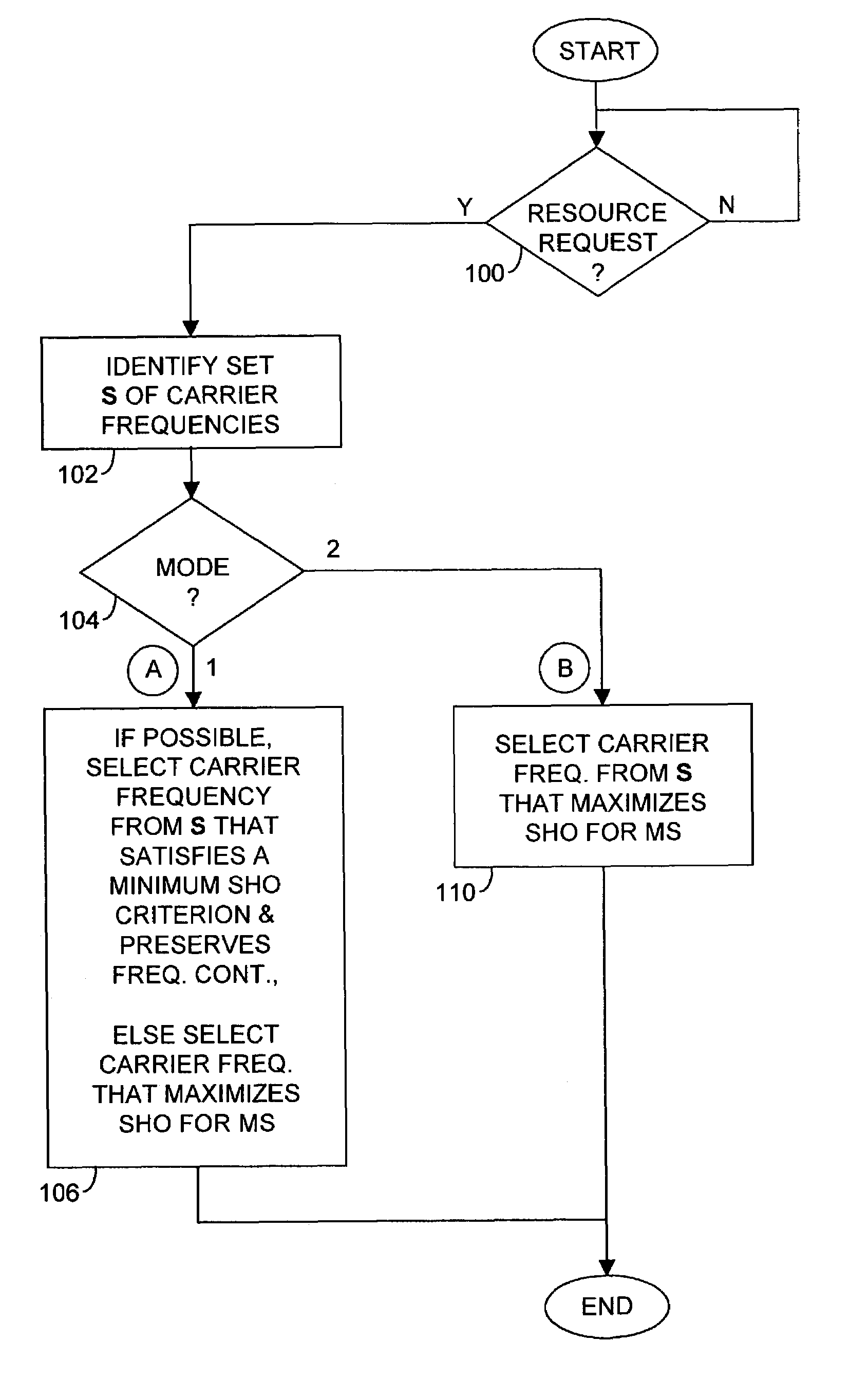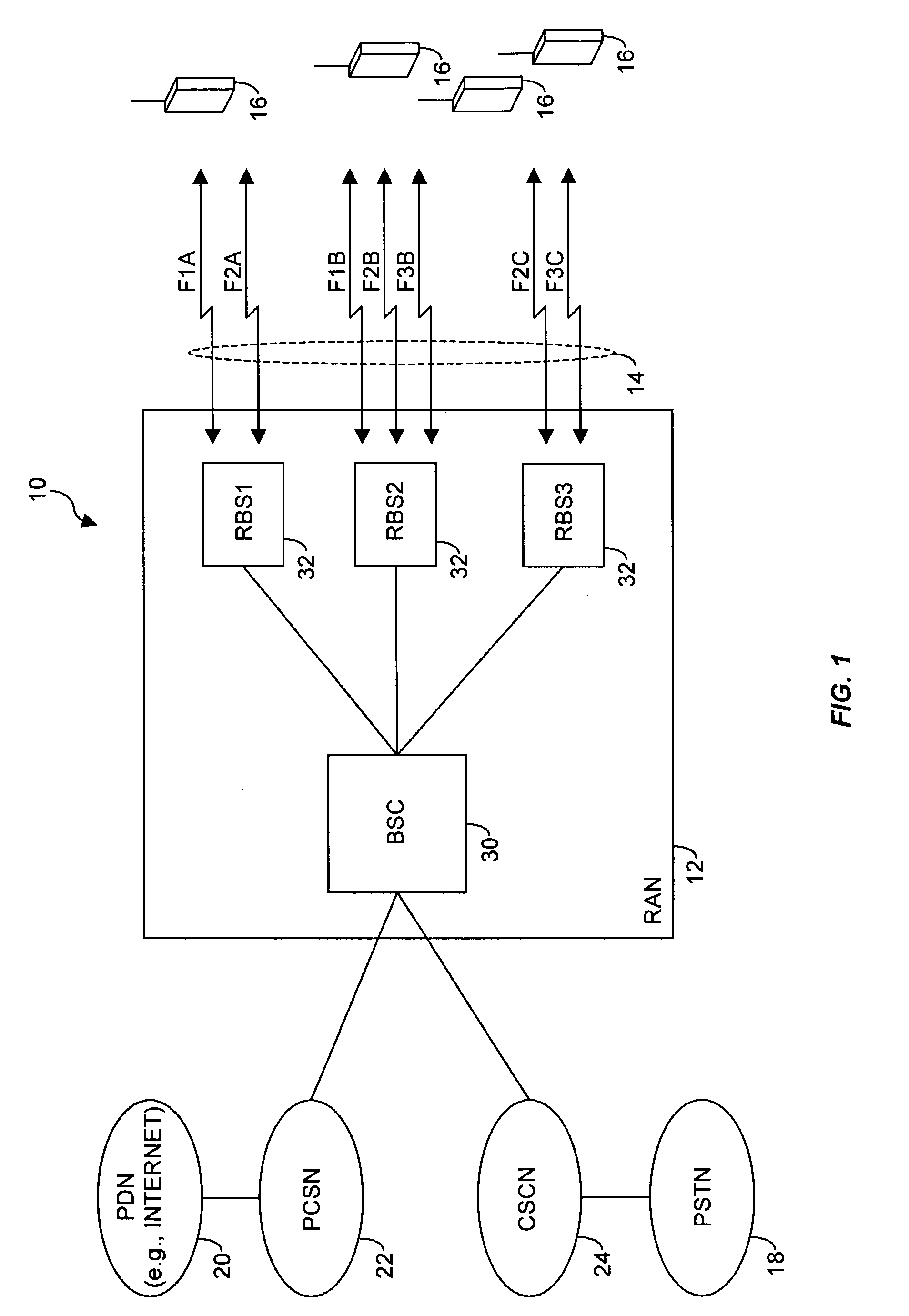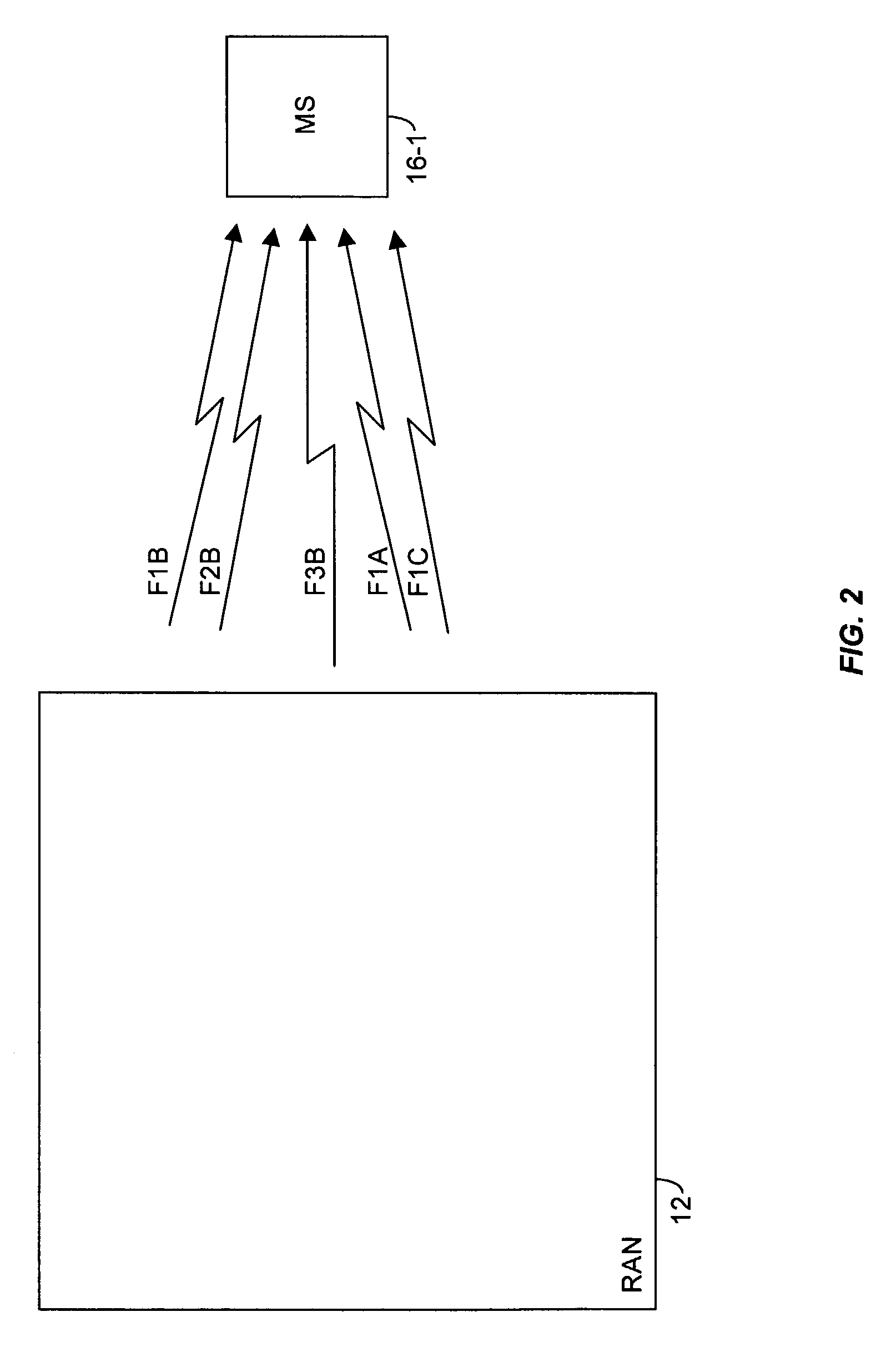Resource granting in multi-carrier CDMA systems
a resource allocation and multi-carrier technology, applied in data switching networks, wireless commuication services, multiplex communication, etc., can solve the problems of reducing the service reliability of multi-carrier networks, etc., to improve the resistance to fading and enhance the connection reliability
- Summary
- Abstract
- Description
- Claims
- Application Information
AI Technical Summary
Benefits of technology
Problems solved by technology
Method used
Image
Examples
Embodiment Construction
[0029]FIG. 1 illustrates an exemplary wireless communication network 10, such as an IS-2000 CDMA network, comprising a Radio Access Network (RAN) 12, which provides a plurality of CDMA channels 14 for communicatively coupling a plurality of mobile stations 16 to one or more external networks, such as the Public Switched Telephone Network (PSTN) 18, and one or more Public Data Networks (PDNs) 20, such as the Internet. A Packet Switched Core Network (PSCN) 22 communicatively couples the RAN 12 to the PDN 20 and, similarly, a Circuit Switched Core Network (CSCN) 24 communicatively couples the RAN 12 to the PSTN 18. With this exemplary arrangement, network 10 provides both circuit-switched communication(e.g., voice, fax) and packet-switched communication (e.g., Web browsing, streaming media, email, etc.) to mobile stations 16.
[0030]An exemplary RAN 12 comprises one or more Base Station Controllers (BSCs) 30, with each BSC controlling one or more Radio Base Stations (RBSs) 32. In an exem...
PUM
 Login to View More
Login to View More Abstract
Description
Claims
Application Information
 Login to View More
Login to View More - R&D
- Intellectual Property
- Life Sciences
- Materials
- Tech Scout
- Unparalleled Data Quality
- Higher Quality Content
- 60% Fewer Hallucinations
Browse by: Latest US Patents, China's latest patents, Technical Efficacy Thesaurus, Application Domain, Technology Topic, Popular Technical Reports.
© 2025 PatSnap. All rights reserved.Legal|Privacy policy|Modern Slavery Act Transparency Statement|Sitemap|About US| Contact US: help@patsnap.com



